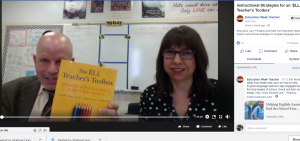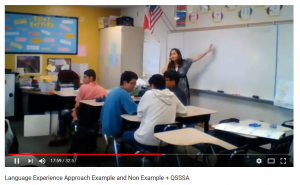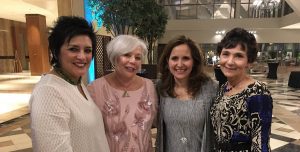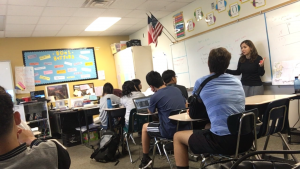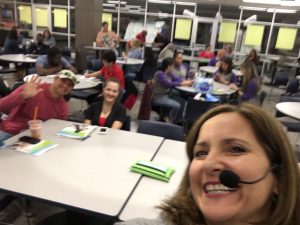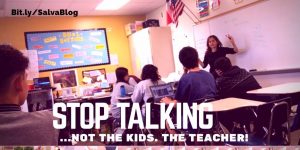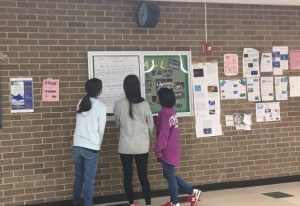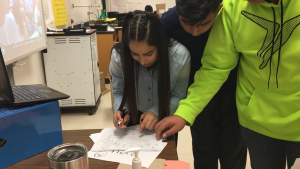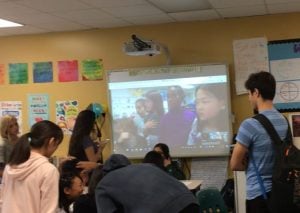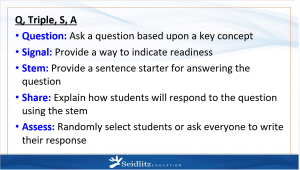The PD in your pocket is off the charts this week, friends! I have Larry Ferlazzo on the podcast plus my reflections on the interview. You can listen on Soundcloud, on other podcast apps, or right here:
Listen to “BAP027 Larry Ferlazzo & The ELL Teacher’s Toolbox” on Spreaker.
Also, we are kicking off #ELLChat_BkClub around his new book, The ELL Teacher’s Toolbox. If you want the video version, I have it here without my reflections:
Larry is currently teaching newcomers and IB classes at Luther Burbank High School in Sacramento, California. He also blogs for Education Week and he writes for the New York Times. If you aren’t following him… go ahead and leave this post and follow him here immediately. You can subscribe to his blog, follow him on Facebook and also follow him on Twitter. Many of us do all of these because he will better your life as an educator, no matter what you teach. 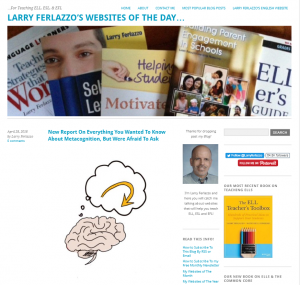
 I have lots of great take-aways from this episode. My favorites are when we talk about how this new book honors our time (NONE of these strategies take much prep time) and how Larry & his co author, Katie Hull-Sypniepski go out of their way to honor people who have shared these strategies. Of course, Katie & Larry share the things they have developed on their own but there are many techniques they learned from others. Larry is right when he says that you can’t copyright a strategy. But how wonderful that they cite the PLN members who shared the strategies with them.
I have lots of great take-aways from this episode. My favorites are when we talk about how this new book honors our time (NONE of these strategies take much prep time) and how Larry & his co author, Katie Hull-Sypniepski go out of their way to honor people who have shared these strategies. Of course, Katie & Larry share the things they have developed on their own but there are many techniques they learned from others. Larry is right when he says that you can’t copyright a strategy. But how wonderful that they cite the PLN members who shared the strategies with them.
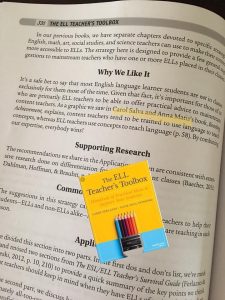
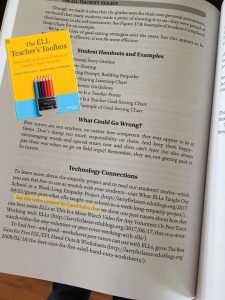 Anna Matis and I are honored to be mentioned in the book as I’m sure are so many other members of our PLN. What a wonderful thing for our profession to have Larry modeling what we want to teach our students – you give credit to others for their work.
Anna Matis and I are honored to be mentioned in the book as I’m sure are so many other members of our PLN. What a wonderful thing for our profession to have Larry modeling what we want to teach our students – you give credit to others for their work.
Nice!
In the show we talk about a recent Facebook Live event on Education Week Teacher’s Facebook page. In that show, Larry and Katie share some strategies from her classroom. I’ve watched it a few times now. If you like this show, you’ll LOVE that one. With a Facebook account, you should be able to see it here.
As we mention in the show, you can access a ton of companion resources, excerpts and tools for free by visiting this post on Larry’s blog.
In the show, Larry mentions two videos he uses all the time as examples of citing other people and sharing resources from our PLN. One is this one from Valentina Gonzales.
and this one I made for volunteers and I’m honored that he included it in the book:
Larry also talked about Student Panels for your PD purposes. We should ALL be doing this. Here is the link to Larry’s post on this including video of his students giving PD. 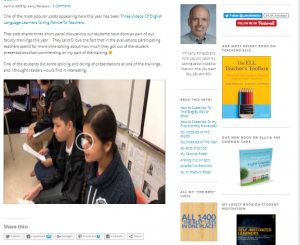
Many people are using these videos of Larry’s students as an example and like me and my students, we have taken his lead. I’ve seen this by Brad Womack and other members of my PLN. Always the same story – there are amazing the outcomes for teachers, students and everyone involved when you allow your students to give PD to teachers.
I’m on Cloud 9 this week after interviewing such a hero of mine. I also got to meet and work with lots of folks from my Canada PLN. Thanks to all of you at the Celebrating Linguistic Diversity Conference in Toronto. Special thanks to Jeffrey Robinson and his team for all the hospitality and help presenting. Jeff & I enjoyed meeting face-to-face and presenting over our social media collaborations.
Head’s up: Challenging you all to do more of that! Find a conference and submit a proposal with a PLN member you’d like to meet. Win-Win for participants and for you. Feel free to use our PPT & resources! Copy it, make it your own and all the resources are here including that presentation.
Sharing about @DerekRhodenizer & @cultofpedagogy at #CLD2018 #edchat #educhat pic.twitter.com/BlJI8Fm1fd
— Carol Salva (@MsSalvac) April 27, 2018
Lastly, big virtual hugs to my VoicED.ca family that I am finally meeting in the flesh. I’ve been part of this community virtually for so long and now I get to hug these folks. 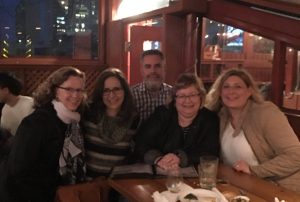 It’s PLNmagic, as Jeffery said this weekend!
It’s PLNmagic, as Jeffery said this weekend!
Thanks for taking time to listen, watch or read this week.
Don’t miss #MADPD coming up on May 6th! It is an all day, online conference! These are the watch links for my Tech for ELs session (6pm CT) and for my Students’ panel (7pm CT).
Also, join us for the first #AbydosInt twitter chat. Abydos Learning is a great project with so many literacy teachers involved in giving staff development and now we want to be connected online with others that are passionate about literacy. Best writing training I. Have. Ever. Had. So do mark you calendar for 8pm CT May 6th to chat about Free Voluntary Reading. Chatting with Abydos trainers is a great thing!
Have a great week folks!
Carol
PS: Please reach out if I can help with training or Seidlitz resources. We are so honored to be adding to the field and supporting EL’s and the teachers who teach them.
